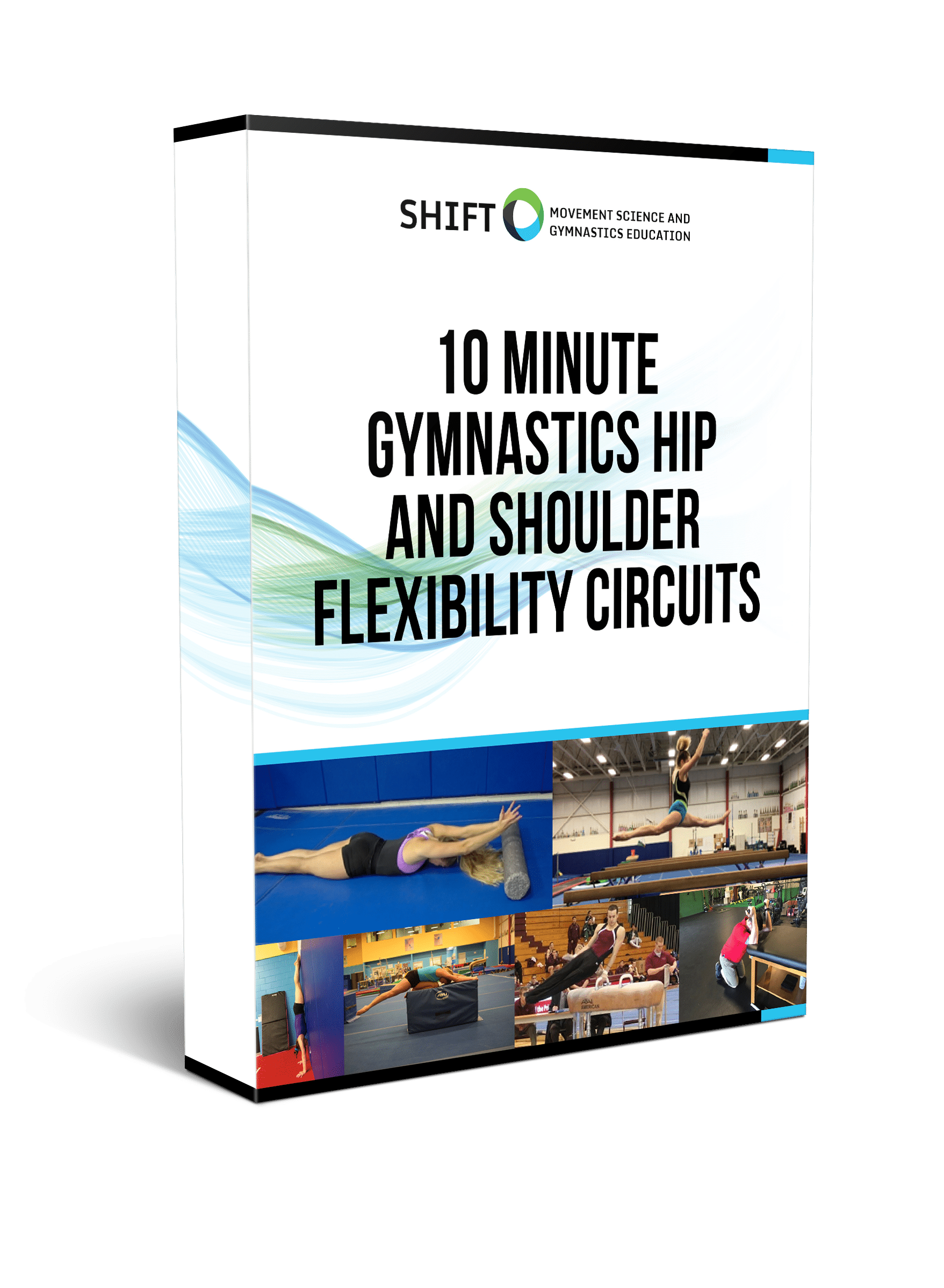“Hip Flexor Tightness” in Gymnasts and The Most Common Error In Stretching
A topic that comes up frequently in my flexibility lectures and when treating gymnastics patients is hyper mobile athletes who feel “hip flexor tightness” or experience ongoing “hip flexor strains”. This issue plagues many gymnasts leading to reduced split mobility, sub optimal skill performance, and unfortunately serious injuries like symptomatic hip instability/labral tears.
I will share more thoughts in the video, but if you are looking for the exact flexibility exercises, drills, and circuits I use with gymnasts, be sure to download my “10 Minute Gymnastics Flexibility Guide” PDF here.
Download My New Free
10 Minute Gymnastics Flexibility Circuits

- 4 full hip and shoulder circuits in PDF
- Front splits, straddle splits, handstands and pommel horse/parallel bar flexibility
- Downloadable checklists to use at practice
- Exercise videos for every drill included
I think a big part of this issue really comes down understanding hip anatomy, appreciating passive versus active stabilizers, and considering what structures we are trying to target with stretching. Here is a quick 3 minute video I filmed to help explain these concepts.
To help combat this problem in athletes who feel chronic hip stiffness, I think we just need to tweak our stretching methods a bit. The commonly used gymnastics hip flexor stretch may look good aesthetically, but may not be the most optimal route for truly addressing the hip flexor/quad soft tissue. Here is another video I filmed earlier this year touching on the same concept, but showing what I do differently when prescribing hip mobilizations given this theory.
Want to Learn My Favorite Hip Flexibility and Split Complex?
I’m a firm believer of not only bringing up ideas that may need some change in gymnastics, but also giving people practical ideas to use in the gym. To help, I have put together a 10 page PDF and video list of my favorite exercises to improve splits and hip flexibility. I regularly use these exercises with great results. To download it, just sign up for the SHIFT Insider Newsletter here,
For medical readers, an additional piece to this issue is a new theory emerging in research suggesting a “dynamic fulcrum” mechanism at the end of ballistic hip extension ranges. The thought is the femoral neck makes contact with the posterolateral acetabular wall, creating an impingement based fulcrum point and creating anteromedial joint microinstability. For more thoughts on this new idea, I highly suggest people check the article The Hyperflexible Hip: Managing Hip Pain in the Dancer and Gymnast out.
Concluding Thoughts
I feel these concepts have huge implication to increased performance and decreased hip pain, but it’s really just the tip of the iceberg. The more I read research, treat gymnasts with hip pain, and design more mobility circuits for the girls I coach, the more I find I am moving away from very traditional flexibility methods I used for years as a younger coach.
Keep in mind, there is a ton more that goes into this conversation. We must consider individualized boney anatomy, building a periodized strength program for lumbopelvic strength, proper gymnastics technique, and more. You can find a lot some other of my thoughts on this topic in this article I wrote earlier this year, which also offers some alternative approaches I use for hip mobility. For now, I hope this helps some people out.
Dave Tilley, DPT
References
- Kalisvaart MM, Safran MR. Microinstability of the hip—it does exist etiology, diagnosis and treatment. Journal of Hip Preservation Surgery Vol. 0, No. 0, pp. 1–13
- Draovitch P1, Edelstein J, Kelly BT. The layer concept: utilization in determining the pain generators, pathology and how structure determines treatment. Curr Rev Musculoskelet Med. 2012 Mar;5(1):1-8. doi: 10.1007/s12178-011-9105-8.
- Weber AE, Bedi A, Tibor LM, Zaltz I, Larson CM. The Hyperflexible Hip: Managing Hip Pain in the Dancer and Gymnast. Sports Health. 2015 Jul;7(4):346-58
- Shu B., Safran MR. Hip Instability: Anatomic and Clinical Considerations of Traumatic and Atraumatic Instability. Clin Sports Med 30 (2011) 349–367
- Huang R, Diaz C, Parvizi J. Acetabular Labral Tears: Focused Review of Anatomy, Diagnosis, and Current Management. Phys Sportsmed. 2012 May;40(2):87-93. doi: 10.3810/psm.2012.05.1968.
- Meyers CA., et al. Role of the Acetabular Labrum and the Iliofemoral Ligament in Hip Stability: An In Vitro Biplane Fluoroscopy Study. Am J Sports Med 2011 39: 85S


